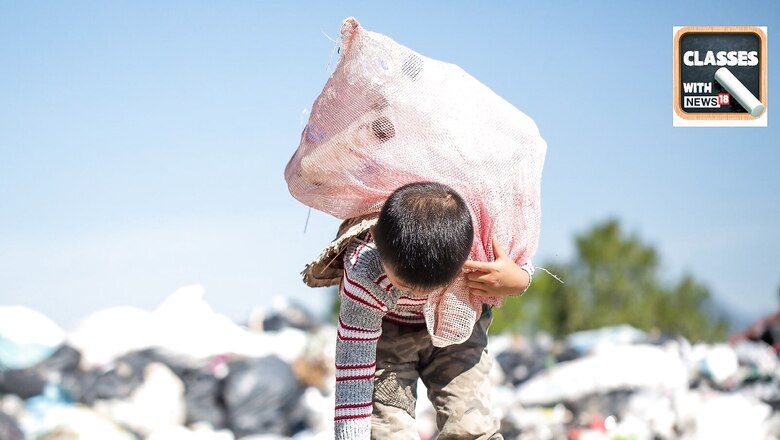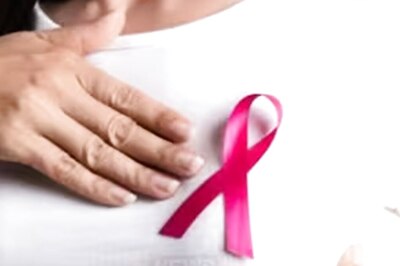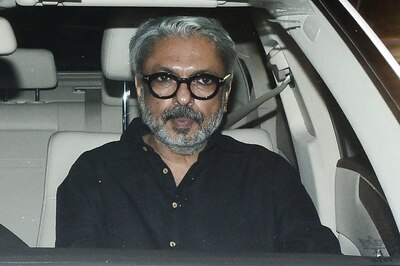
views
India has started to phase out single-use plastic items stating July. The ban will set in motion a long-awaited plan to replace as many as 19 items of ‘low utility’ which are difficult to collect and more challenging to recycle with sustainable alternatives. But why a nationwide crackdown on something as simple as plastic?
Ecologists and activists have been vocal about the problem of plastic pollution for years. Plastic has entered the bodies of fish and has been found in human bodies too. It is degrading our health and changing the way we function. To tackle this problem, it is very important to educate our coming generation about it, as education can equip young people with skills that can help them develop innovative climate solutions. While the term, plastic pollution is introduced to students as early as in class 5, however, many students struggle to understand the gravity of the problem. To ease that, here in classes with News18 we will explain everything you should know about plastic pollution.
What is plastic?
Plastic is a man-made substance that is used to create a variety of significant items including bicycle helmets, car airbags, several medical supplies, and water bottles.
No doubt, plastic is useful to humankind and has become the part and parcel of our life. The issue is that the majority of us use more plastic than is necessary, and half of the plastic we make is intended to be used only once before being discarded. These ‘single-use plastic’ products include straws, food wrappers, shopping bags, and many types of packaging. Additionally, plastic lingers in the natural world for a very long period, harming the environment, because it takes more than 400 years to degenerate.
Did you know that every year 8 million tonnes of plastic end up in our planet’s beautiful blue oceans?
How does plastic waste end up in the sea?
While we see plastic litter almost everywhere we look, this litter is not just on land but has also reached our water bodies, including rivers, seas, and oceans.
Scientists think that a whopping 8.8 million tonnes of plastic end up in the ocean every year. Many of you might ask, how did so much plastic reach the ocean? One method is ‘ocean dumping’, which refers to the illegal dumping of large amounts of garbage into the ocean. But not all of the plastic in the water is intentionally dumped there. In fact, around 80 per cent of plastic in the sea comes from the land.
And that’s not the end of the issue. Even after several years, Plastic does not completely degenerate in the ocean; rather, it only gets smaller and is eventually swallowed by fish, other marine life, and birds. When fish consume the minute pieces of plastic, hazardous industrial chemicals are absorbed into their bodies and eventually consumed by people.
This way plastic pollution is not just harming humans but also our animals and birds. Some studies claim that every year around 1,00,000 marine mammals and turtles are killed due to plastic pollution.
What is single-use plastic and why it is most harmful?
Single-use plastic includes products such as straws, plastic bags that we get from vegetable vendors, milk packets, all chips, and biscuit packets. As the name suggests, it is pretty much any plastic item that’s made for temporary use.
Although we might not think much of it when we buy a water bottle from outside or ask for extra plastic bags at the grocery store, these small choices have a serious impact on the health of our planet and ourselves.
As single-use plastic is most difficult to collect and recycle. Additionally, due to their light weight, single-use plastic items can travel great distances by the wind alone.
How to avoid single-use plastic?
Stop buying bottled water
Skip the straw
Bring your own reusable cup or bottle
Bring your own reusable grocery bags
choose products with less packaging
Turn down the plastic silverware
Return or recycle food containers
Shop locally
India’s Plastic Roads
India in a unique step has created roads out of plastic. This idea was brought to life by a plastic sack manufacturer in Bangalore – Ahmed Khan. Here is the story of Khan as explained in NCERT books. Khan, aged 57 years old, has been producing plastic sacks for 20 years. About 8 years ago, he realized that plastic waste was a real problem. Polyblend, a fine powder of recycled modified plastic, was developed then by his company. This mixture is mixed with the bitumen that is used to lay roads. In collaboration with R.V.College of Engineering and the Bangalore City Corporation, Ahmed Khan proved that blends of Polyblend and bitumen, when used to lay roads, enhanced the bitumen’s water-repellant properties, and helped to increase road life by a factor of three. The raw material for creating Polyblend is any plastic film waste. So, against the price of Rs. 0.40 per kg that rag pickers had been getting for plastic waste, Khan now offers Rs.6. Using Khan’s technique, by the year 2002, more than 40 kms of road in Bangalore has already been laid. At this rate, Khan will soon be running short of plastic waste in Bangalore, to produce Polyblend. Thanks to innovations like Polyblend, we might still avoid being smothered by plastic wast.
How to reduce plastic pollution and teach your family about it?
To eradicate plastic, it does not need a huge idea, we all can take our tiny steps to solve these problems. Look at how much single-use plastic your family uses by filling out a plastic journal for a week – then talk about what you can do to use less!
Use reusable water bottles, re-usable shopping bags, and ask your parents to choose loose produce instead of food that is packed in multiple layers of plastic when you go shopping. Another interesting way to be reduce plastic pollution would be asking your teachers and parents to conduct plastic cleaning drive in areas around you. It’s enjoyable, and we guarantee you’ll be incredibly proud of the impact you’ve had.
Last but not the least, recycle as much plastic as you can as well!
But don’t forget, while recycling is a big part of keeping our environment safe and clean, reducing consumption is more impactful.
Ban on plastic pollution
In a recent move, the government announced a phased ban on ‘single-use plastic which includes straws, plastic bags, and plastic water bottles, in India. The ban which has been in the talks for almost two years prohibits the manufacture, circulation, and sale of 21 types of plastic items. This ban could have a significant impact on checking plastic pollution in the country and might help eradicate single-use-plastic, which has become the part and parcel of our life.
The items on which the Central Pollution Control Board (CPCB) have announced a ban are earbuds; balloon sticks; candy and ice-cream sticks; cutlery items including plates, cups, glasses, forks, spoons, knives, trays; sweet boxes; invitation cards; cigarette packs; PVC banners measuring under 100 microns; and polystyrene for decoration.
Test Your Knowledge
Here is a quick test of what we have learned so far
To learn about other topics taught in school, explained by News18, here is a list of other Classes With News18: Queries Related to Civics Chapter on ‘Elections’ | Sex Versus Gender | Natural Disasters | Wonderland of Letters | Civil Wars | Cryptocurrencies | Economy & Banks | Silk Route
Read all the Latest News, Breaking News, watch Top Videos and Live TV here.




















Comments
0 comment